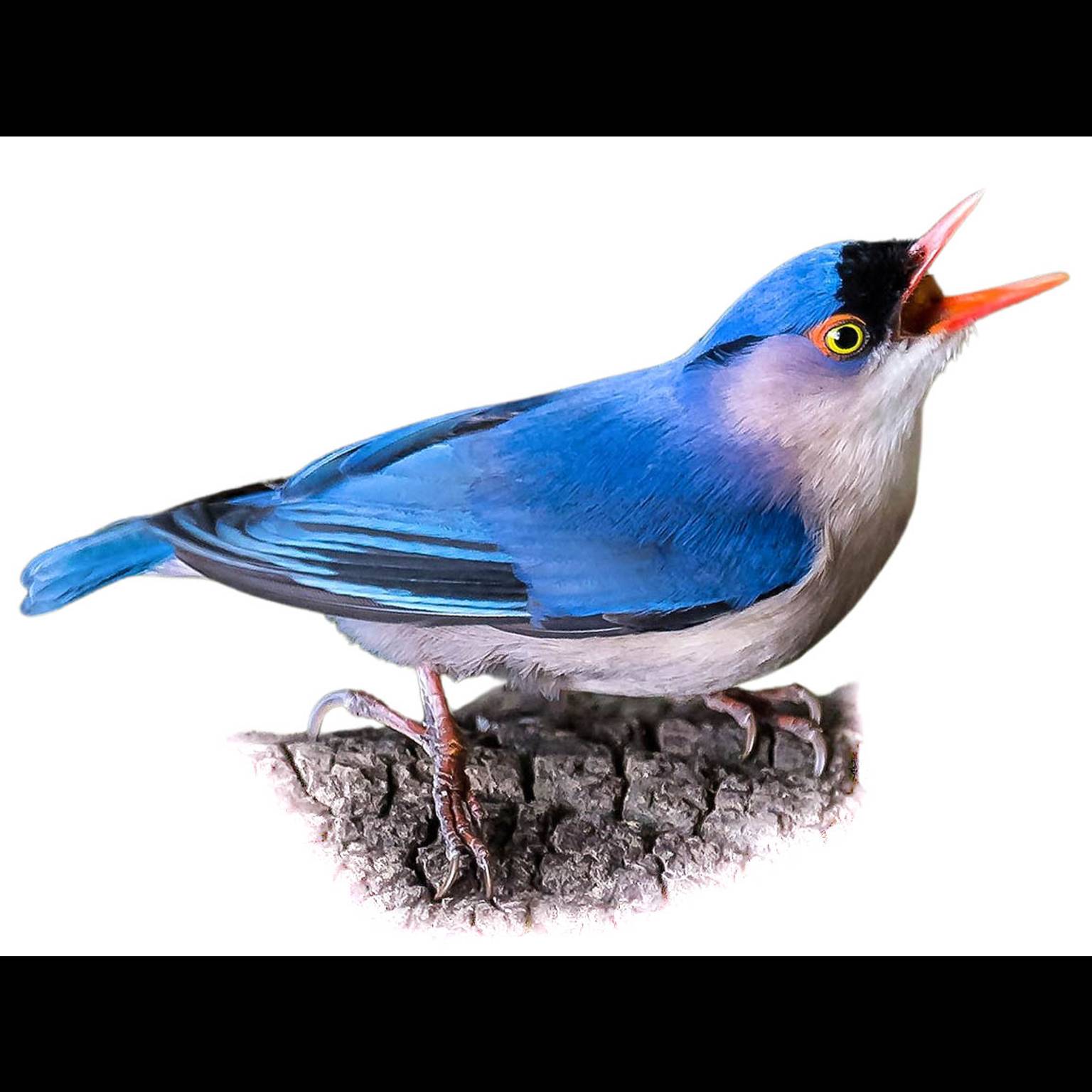
Velvet-fronted Nuthatch
Sitta frontalis
The Velvet-fronted Nuthatch, Sitta frontalis, is a diminutive passerine, measuring a mere 12.5 cm in length. It is adorned with a violet-blue back, lavender cheeks, and beige underparts. Its eyes are a striking yellow, and the throat is a delicate whitish hue. The species is distinguished by a red bill and a distinctive black patch on the forehead and lores, more pronounced in adults and subdued in juveniles. The male is further characterized by a black stripe above the eye that extends over the head.
Identification Tips
To identify the Velvet-fronted Nuthatch, look for its vibrant blue upperparts and the contrasting red bill. The male's black supercilium is a key distinguishing feature. Females lack this stripe and have a warmer tone to their underparts. Juveniles are paler and lack the black frontal band. The pale yellow iris is also a notable characteristic of this species.
Habitat
This nuthatch favors a variety of forest habitats, from deciduous to evergreen, and can also be found in secondary forests and shade trees within coffee plantations in southern India.
Distribution
The species is widespread across southern Asia, from Nepal, India, and Sri Lanka, extending east to south China and Indonesia. It is a resident breeder, meaning it does not typically migrate.
Behaviour
The Velvet-fronted Nuthatch exhibits a remarkable ability to navigate tree trunks and branches, moving with a jerky motion. It can even climb down tree trunks, a feat not shared by all tree-dwelling birds. It is an active forager, feeding on insects and spiders found on the bark. Often, it joins mixed-species foraging flocks, contributing to the avian diversity of the forest soundscape.
Song & Calls
This species is often detected by its repetitive "sit-sit-sit" call, a rapid chipping note that can lead observers to its presence.
Breeding
Breeding occurs in tree cavities or crevices, which are lined with soft materials such as moss, fur, feathers, or grass. The breeding season varies by region, with northern India seeing activity from April to June, and southern India and Sri Lanka from January to May. The Velvet-fronted Nuthatch lays three to six eggs, which are white and speckled with red.
Similar Species
While there are no similar species that could be easily confused with the Velvet-fronted Nuthatch, it is closely related to Sitta solangiae, Sitta azurea, and Sitta oenochlamys.
Diet and Feeding
The diet consists primarily of insects and spiders gleaned from tree bark. Its strong claws allow it to forage in unique ways, including descending headfirst down tree trunks.
Conservation status
The IUCN Red List classifies the Velvet-fronted Nuthatch as Least Concern, indicating that it is not currently at significant risk of widespread decline.































































